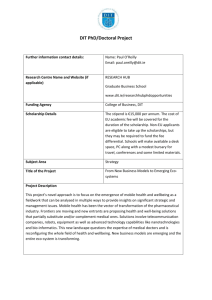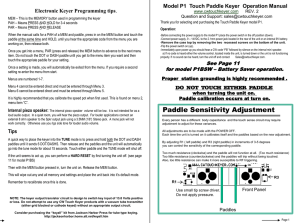What`s all this iambic keyer mode A and B stuff, anyhow
advertisement
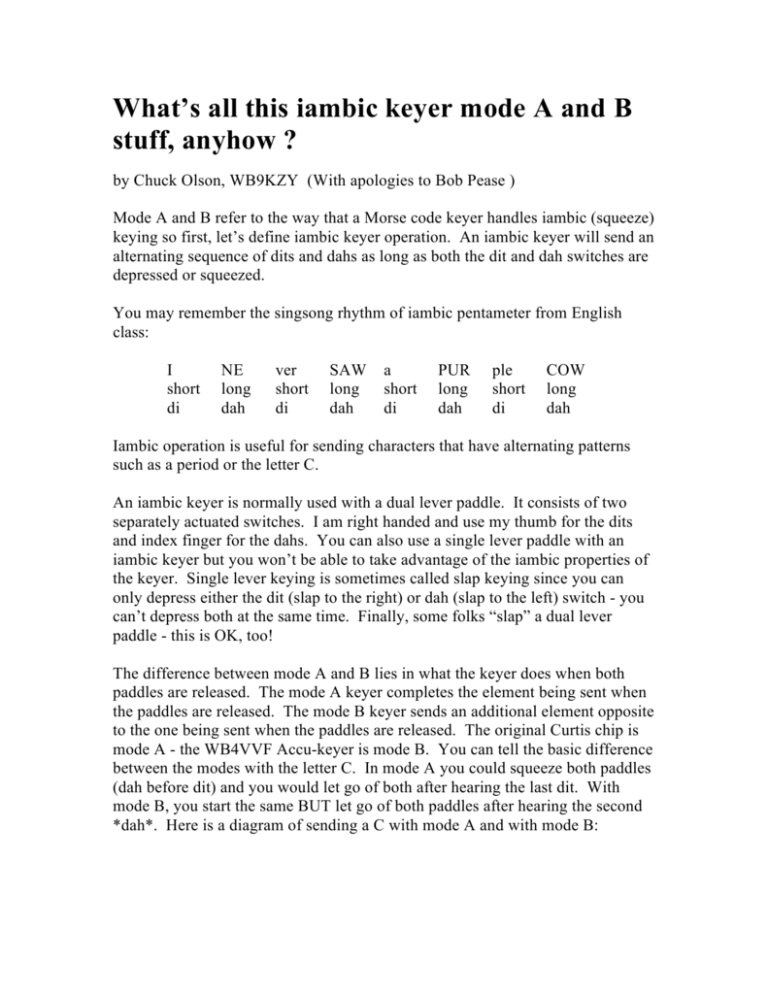
What’s all this iambic keyer mode A and B stuff, anyhow ? by Chuck Olson, WB9KZY (With apologies to Bob Pease ) Mode A and B refer to the way that a Morse code keyer handles iambic (squeeze) keying so first, let’s define iambic keyer operation. An iambic keyer will send an alternating sequence of dits and dahs as long as both the dit and dah switches are depressed or squeezed. You may remember the singsong rhythm of iambic pentameter from English class: I short di NE long dah ver short di SAW long dah a short di PUR long dah ple short di COW long dah Iambic operation is useful for sending characters that have alternating patterns such as a period or the letter C. An iambic keyer is normally used with a dual lever paddle. It consists of two separately actuated switches. I am right handed and use my thumb for the dits and index finger for the dahs. You can also use a single lever paddle with an iambic keyer but you won’t be able to take advantage of the iambic properties of the keyer. Single lever keying is sometimes called slap keying since you can only depress either the dit (slap to the right) or dah (slap to the left) switch - you can’t depress both at the same time. Finally, some folks “slap” a dual lever paddle - this is OK, too! The difference between mode A and B lies in what the keyer does when both paddles are released. The mode A keyer completes the element being sent when the paddles are released. The mode B keyer sends an additional element opposite to the one being sent when the paddles are released. The original Curtis chip is mode A - the WB4VVF Accu-keyer is mode B. You can tell the basic difference between the modes with the letter C. In mode A you could squeeze both paddles (dah before dit) and you would let go of both after hearing the last dit. With mode B, you start the same BUT let go of both paddles after hearing the second *dah*. Here is a diagram of sending a C with mode A and with mode B: Mode A keyer output Dah paddle Dit paddle Mode B keyer output Dah paddle Dit paddle This only affects letters and characters like C, PERIOD or AR, unfortunately the most commonly sent sequence in ham radio is CQ, so you can usually tell right away if an op has the mode set correctly when operating an unfamiliar keyer. I use mode B - the mode you end up with just depends on which type of keyer you used when learning to send - I learned using an Accu-keyer. I hope this discussion has made the differences between mode A and B a little clearer . Best Regards, Chuck Olson - WB9KZY Jackson Harbor Press jacksonharbor@worldnet.att.net http://home.att.net/~jacksonharbor

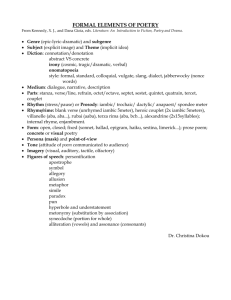
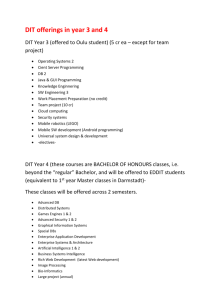
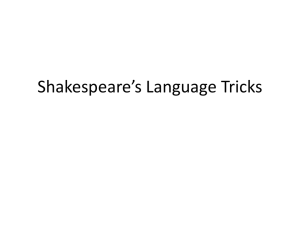
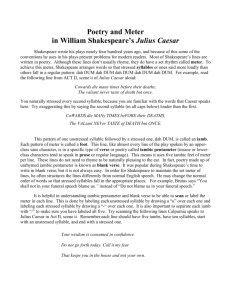
![iambic-pentameter-powerpoint[1]](http://s2.studylib.net/store/data/005389283_1-88464eb62969318d407043f4e7784268-300x300.png)
